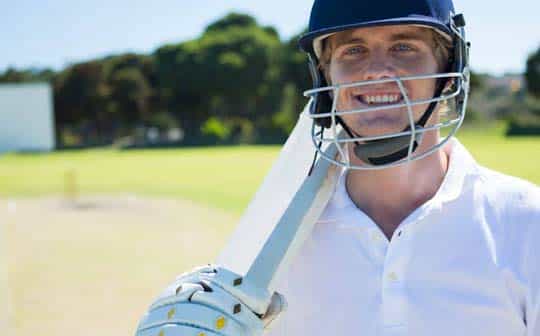A healthy lifestyle is an important prerequisite for optimum eye health, so the exercise aspect of any sporting activity is never anything but beneficial, even for the eyes. Nevertheless, eye health in sports is something that’s often overlooked!
Coupled with a balanced diet and vitamin intake, an active approach to life is one of the best ways to minimise your risk of developing potentially harmful conditions such as diabetes, high blood pressure and hardening of the arteries – all of which can have implications for sight loss.
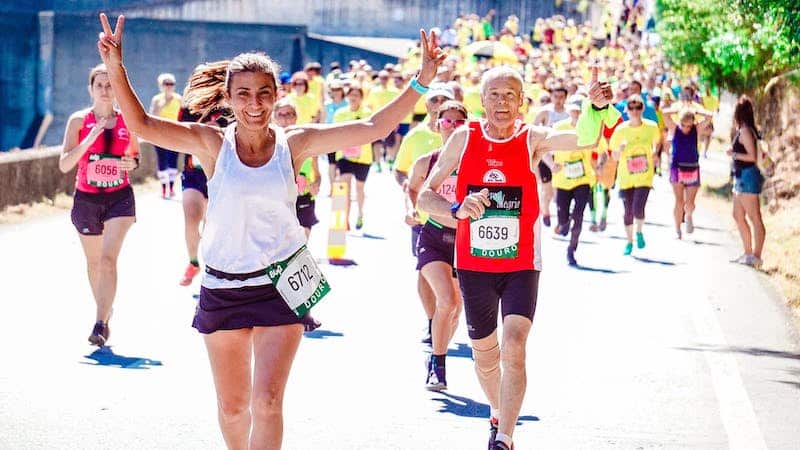
Nevertheless, as this article will discuss, participation in sport carries its own ocular risks and challenges. Therefore, to keep safe and maintain healthy vision, all players will need to be aware of the special dangers each discipline and sporting environment may present.
In addition, more advanced competitors may wish to take advantage of various kinds of custom eyewear, specialist equipment and state of the art optical treatments which are available, not only to protect but often to enhance features such as hand-eye coordination and thus deliver an optimal sporting performance.
Know the score – Eye Health in Sports
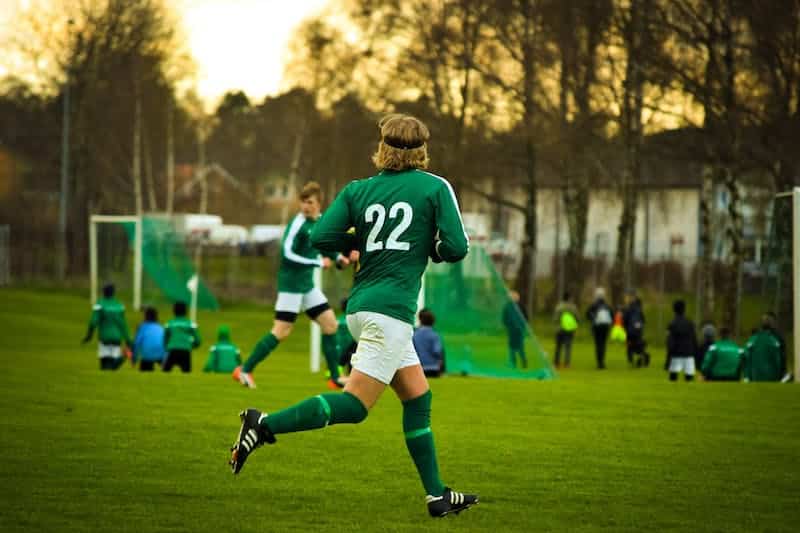
Sport and the risk of eye injury
According to statistics from the American Academy of Ophthalmology (AAO), there are around 100,000 US sports eye injuries every year. One in three incidents involve children, and at least 42,000 of these injuries require Accident & Emergency treatment, with medical professionals expecting to handle a sport-related eye injury once every 13 minutes on average.
While bruises, broken bones and other physical sports injuries are quite likely to heal without lasting damage, the eyes are often more vulnerable to major harm and may even suffer permanent impairment. AAO figures show that each year, 13,500 sporting injuries in a diverse catalogue of sporting accidents result in blindness.
So-called contact sports like rugby, American football, boxing and martial arts clearly pose an obvious risk of serious eye injury to those who take part, but these are not the only areas of concern.
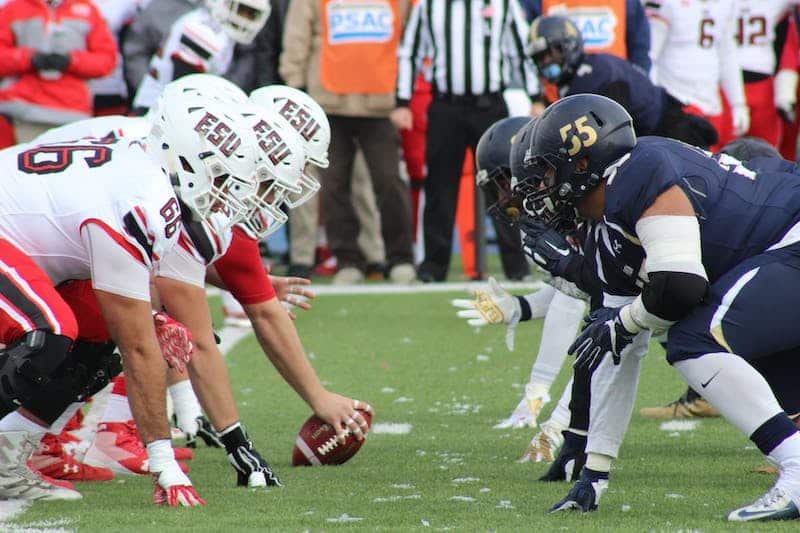
For instance, every year around 50 people attends UK hospitals suffering from acute eye injuries sustained in the course of trampolining, while a glance through the US Eye Injury Registry shows that a globally popular leisure pastime like fishing is actually the primary cause of sport-acquired ocular trauma.
Sports involving the wielding of clubs, bats, rackets, sticks and similar equipment to propel balls, shuttlecocks and other solid flying objects add yet another element of danger for players, and sometimes for coaches and spectators too.
For example, RoSPA (the Royal Society for the Prevention of Accidents) has estimated that 2,000 UK hospital admissions every year are the direct result of eye injuries caused by squash balls, while another 2,400 are attributed to accidents involving squash rackets.
They have also calculated that one-third of all squash players will sustain some kind of ocular injury over the course of a playing career.
An AAO analysis of ice-hockey eye injuries shows the most common causes can be broken down as follows:pucks – 37%high-sticking – 28%fights – 18%unspecified – 17%
Doubtless, the UK’s field hockey statistics will be somewhat similar, and anyone who doubts the life-changing potential of a sporting eye injury caused by failing to track a hard ball bowled, pitched or struck in your direction with lethal force has only to consult the sporting record books to find compelling evidence of the inherent dangers:
- Cricket – the quickest fast bowler in the sport, Australian player Jeff Thompson, could deliver a hard cricket ball at incredible speed to a batsman standing just 22 yards away. Thompson holds the cricket bowling record of 99.8 miles per hour, achieved back in 1976 during the era when batsmen were allowed only minimal protection.
- Baseball – the fastest pitch recorded was sent down by Cincinnati Reds left-handed relief pitcher Aroldis Chapman at Petco Park, San Diego, in 2010. On 25 September of that year, he pitched up at a documented speed of 105.1 miles per hour, allowing the batter about 0.04 seconds to see the ball, estimate its trajectory, decide whether or not to swing, and then make the hit.
- Squash – On 9 May 2014, Australian professional squash player Cameron Pilley managed to smash a rocket-paced squash ball which flew at an astounding 176 miles per hour.
Want To Find Out If You’re Suitable?
If you’re wondering whether laser eye treatment is the right choice for you, there are some key things to consider…
How to Protect your Eyes when Playing Sport
All sports have their own rules concerning aspects of participation, and players taking up a new sport are coached and encouraged to adopt and follow safe techniques which comply with these laws. Therefore, the first duty of sporting athletes is always to observe the rules of their sport, for their own safety and to ensure the safety of others. This alone should minimise the risk of accidents involving eye injury through illegal play or reckless use of equipment, though children playing sport should always be supervised in accordance with their age and sporting experience.
Beyond playing by the rules, protecting your vision is largely a matter of choosing and wearing proper eye protection. Writing in the ‘The Physician and Sports Medicine’ in June 2000, Paul F. Vinger, MD commented:
‘Available eye protectors can reduce the risk of eye injury by at least 90%, but a principal impediment to the more widespread use of protective eyewear is confusion of all concerned with sports—principals, athletic directors, coaches, umpires, referees, players, and medical personnel—as to which protectors are the most effective.’
It is important for sportsmen and -women to understand that everyday eyewear is rarely appropriate for sporting activities, and in some circumstances may considerably increase the dangers.
The transparent cornea at the front of the eye is around 0.5–0.6 mm in thickness at its centre point, leaving it particularly vulnerable to preventable injury unless protected by sports glasses. Those requiring prescription sports glasses will find these are also readily obtainable. Effective sports eyewear is regulated by defined safety standards. In the UK and the rest of the European Union, for instance, such matters are addressed within the Personal Protective Equipment (European Community EC Directive) Regulations (1992).
This has produced regulatory initiatives such as BS EN 174:2001, covering ski goggles for downhill skiing, and BS 7930-1:1998, detailing the specifications for squash oculars and eye protectors for other racket sports.
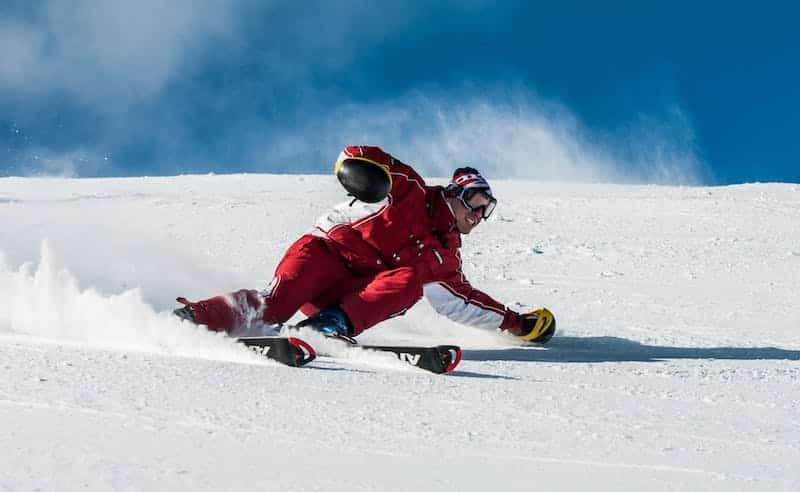
Having purchased suitable sports glasses or prescription sports glasses, it is of course absolutely essential you remember to wear them during any form of sporting activity, and likewise, such eye protection must always be kept as clean as possible to maximise its safety benefits for the wearer.
Eye Protection for Water Sports
Aquatic sports in salt or chlorinated waters present further problems for eye health, and swimming whilst wearing contact lenses should be avoided wherever possible. Water can be a source of eye irritation and infections which can transfer to your contact lenses and cause conditions such as Acanthamoeba keratitis, which has the potential to cause permanent loss of vision.
Anyone who feels they must surf, swim, dive or water-ski with contact lenses, and those who wish to gain maximum protection against water-borne infection, should wear well-fitted swim goggles or sports prescription goggles and ideally use contact lenses which are disposed of daily.
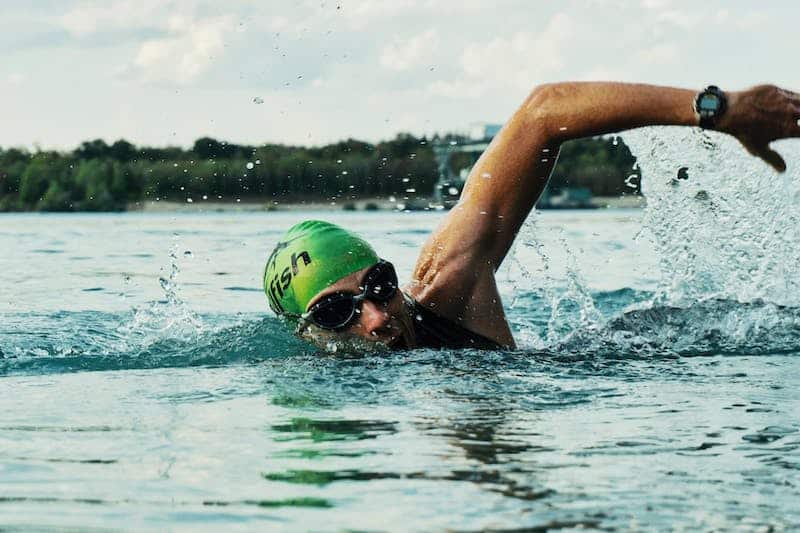
Wearing proper eyewear designed for your particular water sport will keep you safe and increase your enjoyment.
For instance, a firm watertight mask will make scuba diving more comfortable, and swimmers equipped with well-adjusted goggles or special sports prescription goggles will also find their surface and underwater vision significantly improved.
Protective Eyewear for Field Sports
Sports which take place on dry land have their own range of custom protection equipment. Here eye protection is often combined with other safeguarding elements relevant to each sporting discipline. For instance, a fast and relatively high-risk contact activity such as American football uses a full helmet plus a metal grille alongside a tough polycarbonate eye shield.
Hockey keepers also wear a hard helmet which has a full face shield attached, while cricketing batsmen and baseball hitters both opt for a rigid helmet with a tough metal grille.
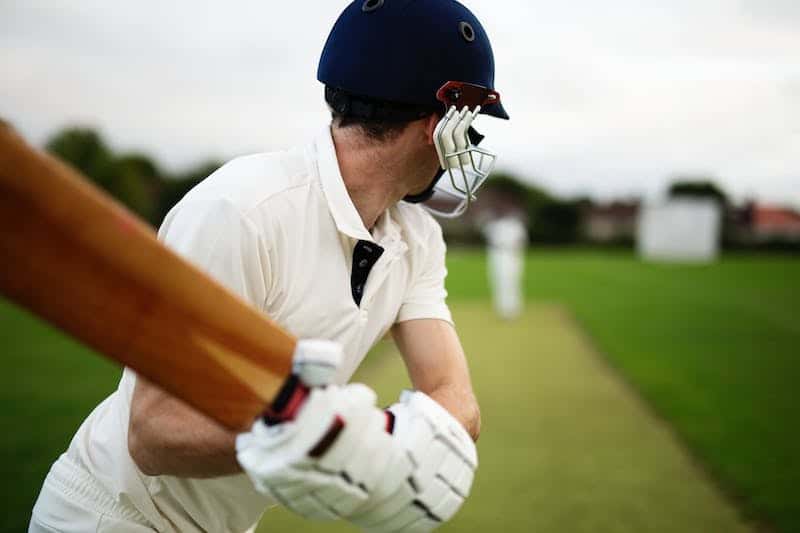
In a sport such as fencing, where mobility is more tightly constrained, the injury risk is more direct and focused, so the face and eyes are shielded by a full metal-mesh mask, perhaps augmented by a see-through visor.
Meanwhile, squash players wear special squash goggles with tough polycarbonate lenses which are shatterproof and impact-resistant to protect their eyes from a flying squash ball which could easily be travelling at a speed in excess of 150 miles per hour.
Where eye-safety equipment incorporates a clear lens there is often a choice of materials including glass, acrylic and polycarbonate.
In every instance polycarbonate, which performs as well as glass but is altogether much tougher, is the safest option to choose for your sports glasses and other protective eyewear.
Shielding Your Eyes From The Elements

The majority of sports take place in the open air which means that participants are potentially exposed to strong sunlight for extended periods of time.
Though most players understand the need to protect their skin against the dangers of sunburn and harmful UV rays, few realise they also run the same risks – sunburned eyes (photokeratitis) and UV damage – with their vision.
As well as sun damage to the eyes, sports like sailing and high-altitude skiing may also encounter wind, rain and snow conditions which pose further visual challenges.
On occasions, ball-playing athletes in the field such as cricketers and baseball players may also be expected to field a ball or take a catch while looking directly at the sun.
Though a peaked cap or a wide-brimmed floppy hat may afford some level of protection, anyone taking part in a sport where they are sometimes looking at the sun should wear protective sunglasses certified to meet the British Standard BS EN ISO 12312: 2013, or otherwise carrying a CE mark.
Enhanced Sports Performance Benefits
In modern competitive sport, eyewear may offer more than just a protective function. Many elite sports athletes now look for improvements in every aspect of their game – including their visual acuity.
Skiers may look to tints, mirror coatings and polarised lenses, sometimes to counteract glare by reducing VLT (visible light transmission), and sometimes to filter daylight by using colour tints matched to the prevailing weather conditions in order to maximise their visual performance.
In a similar vein, hunters and archers may choose certain tints to help their visual focus. A sodium-yellow tint, for example, helps to boost contrasts in ‘black on white’ target shooting.
The Advantages of Laser Eye Surgery in Sports
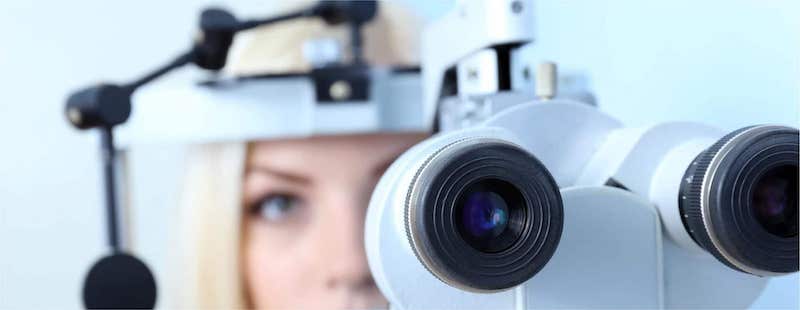
Given the emphasis placed on skills such as advanced hand-eye coordination, finely tuned depth perception and flawless eye-tracking abilities, it is hardly surprising that top players in all sports are forsaking prescription glasses and contact lenses in favour of corrective laser eye surgery.
The surgery route is not only more convenient than glasses, which can be scratched, damaged or mislaid when you need them most, it is also safer for your eye health than contact lenses which carry a risk of infection and have their own sport and exercise limitations.
Laser eye surgery is a quick minor operation which reshapes the cornea to improve the eye’s ability to focus.
A remedy for short-sightedness, long-sightedness and astigmatism, this procedure has short recovery time and offers the benefit of full peripheral vision as well as permanent freedom from the need to use glasses or contact lenses.
There are two main types of laser eye surgery which remodel the cornea using slightly different methods to achieve a similar outcome. These are:
- LASEK (Laser-Assisted Subepithelial Keratomileusis) eye surgery, also known as PRK
- LASIK (Laser-Assisted Subepithelial Keratomileusis) eye surgery
In LASEK (PRK) surgery, the eye surgeon carefully moves the epithelium (the outer layer of the cornea) to one side in order to reshape the deeper layer of the cornea. Once this has been accomplished, the protective epithelium is then replaced to allow the cornea to heal. The LASIK procedure employs one laser to create a very thin corneal flap whilst a second laser is then deployed to correct the corneal focus. When the adjustment is complete, the flap is then replaced to begin the healing process.
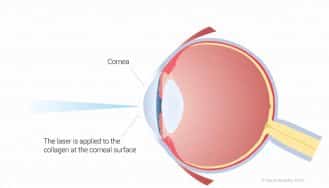
Recovery times for the two procedures are slightly different: LASIK surgery patients can usually expect a functional vision to return in a few hours, whereas LASEK patients may require between one and two weeks for functional vision to be restored.
Though LASIK is a faster procedure, some contact sports professionals favour the LASEK option, primarily because the absence of a flap tends to promote greater corneal stability, however in recent years with developments in femtosecond technology LASIK is known to be just as safe.
Laser vision correction equips today’s sports enthusiasts with the means to make the best of their talent, improve their performance, and enhance their enjoyment of their sporting passion.
Contact us today to learn more about the benefits and convenience of laser eye surgery.
Contact an Experienced Ophthalmologist Today
Whether you are considering laser vision correction or have been diagnosed with an eye condition that requires treatment, it is important to seek the advice of an experienced ophthalmologist.
The specialist eye surgeons at Focus Clinics have successfully treated thousands of patients, many of them professional sportspeople.
To book a free consultation to discuss your individual needs, contact us today to learn more about the benefits and convenience of laser eye surgery.
FAQs
What Sports Are Good for Eye Health?
Running, cycling, and racquet sports are all excellent exercises for the eyes. These activities help to improve blood circulation and the delivery of oxygen and nutrients to eye tissues. Racquet sports, in particular, help to improve hand-eye coordination.
Can Sports Improve Eyesight?
Yes, some sports can help to improve eyesight. Activities that require good limb-eye coordination, such as baseball, tennis, and basketball, can help to train the eyes to track moving objects more effectively. Physical activities that improve cardiovascular fitness, such as running and swimming, can also help to improve eyesight by increasing blood circulation to the optic nerve.
How Do You Protect Your Eyes in Sports?
There are a number of ways to protect your eyes while playing sports. Wearing protective eyewear is the most important measure you can take to safeguard your vision. Sunglasses or eyeglasses with shatterproof lenses can help to protect your eyes from debris, dust, and ultraviolet (UV) rays.
You should also consider wearing a visor or hat with a brim to shade your eyes from the sun. Disposable contact lenses are another option for protecting your eyes from debris and UV rays. Finally, be sure to take breaks often to rest your eyes and stay hydrated to keep your eyes lubricated.
What Sport Has the Most Eye Injuries?
Basketball and baseball are the two sports with the highest rates of eye injuries. Injuries can occur when players are hit by a ball or when they collide with another player. Water and racquet sports, such as swimming and squash, are also associated with a high risk of eye injuries.

